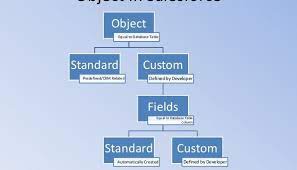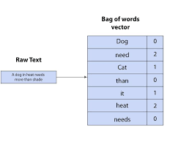Master-detail and Lookup Relationships in Salesforce
Understanding Data Relationships in Salesforce: Master-Detail vs. Lookup Relationships In Salesforce, data is structured using three fundamental elements: Objects, Fields, and Records. Objects act as tables in a database, fields represent columns, and records serve as rows. To efficiently manage and access data while maintaining consistency, data relationships play a pivotal role. These relationships define how records in one object are connected to those in another, enabling seamless organization and interaction. Among the most common types of data relationships in Salesforce are Master-Detail and Lookup Relationships. The primary distinction between these two lies in their level of dependency: This article delves into the details, benefits, and practical applications of these relationships, along with a head-to-head comparison. Master-Detail Relationship in Salesforce A Master-Detail Relationship creates a strong dependency between two Salesforce objects, where one serves as the parent (master) and the other as the child (detail). Key Features Example: Order Management For every order, multiple products (order line items) may be included. If the parent order is deleted, all related order line items are also deleted. Additionally, rollup summary fields can calculate the total number of line items or their combined value. Benefits Lookup Relationship in Salesforce A Lookup Relationship represents a more flexible association between objects, where the child object is less dependent on the parent. Key Features Example: Product Catalog In this scenario, order line items reference specific products. If a product is deleted, the related line items remain, but their references are cleared. Benefits Master-Detail vs. Lookup Relationships Feature Master-Detail Relationship Lookup Relationship Dependency Strong (child depends on parent) Weak (child independent of parent) Cascade Delete Yes No Rollup Summary Fields Supported Not supported (use RollUp Magic) Security Settings Inherited from parent Independent Flexibility Less flexible Highly flexible Overcoming Lookup Relationship Limitations with RollUp Magic One notable limitation of lookup relationships is the lack of support for rollup summary fields. This gap can be bridged with the tool RollUp Magic. Key Features of RollUp Magic Conclusion Master-detail and lookup relationships are essential tools in Salesforce for managing data associations. For organizations leveraging lookup relationships, tools like RollUp Magic, GridMate, or clearMDM enhance data management by enabling rollup summary fields, elevating reporting and analytics capabilities. By understanding the nuances of these object relationships, you can better organize and manage your Salesforce data to meet your business needs effectively. Like Related Posts Salesforce OEM AppExchange Expanding its reach beyond CRM, Salesforce.com has launched a new service called AppExchange OEM Edition, aimed at non-CRM service providers. Read more The Salesforce Story In Marc Benioff’s own words How did salesforce.com grow from a start up in a rented apartment into the world’s Read more Salesforce Jigsaw Salesforce.com, a prominent figure in cloud computing, has finalized a deal to acquire Jigsaw, a wiki-style business contact database, for Read more Service Cloud with AI-Driven Intelligence Salesforce Enhances Service Cloud with AI-Driven Intelligence Engine Data science and analytics are rapidly becoming standard features in enterprise applications, Read more










